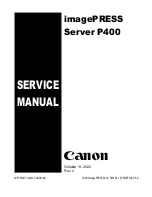
SSE232-LE User’s Manual
Exemys
UDP
Client
E T H E R N E T
UDP
Server
Data ( lost )
RS-232
E T H E R N E T
RS-232
(1) Without any established connection any data is lost
First Datagram
(2) The client sends the first Datagram to establish connection
E T H E R N E T
RS-232
(3) Once connection is established all data is transmitted
Data
Data
UDP
Client
UDP
Client
UDP
Server
UDP
Server
SSE232-LE
SSE232-LE
SSE232-LE
SSE232-LE
SSE232-LE
SSE232-LE
Figure 9 - Two SSE232-LE UDP, one client and one server
When two SSE232-LE connect through an UDP Transport Protocol, one of them in Client Mode
and the other in Server Mode, the SSE232-LE in Server mode will not send the information
received by the serial to the Client’s IP unless the client has previously sent a packet to establish
communication. In other words, the SSE232-LE Server will have to receive a UDP packet from the
client to be linked to that IP. After that, all the information received by the serial port will be
transmitted to the client’s IP.
If the client fails to send a packet to the server, the server will not be able to establish a link and
the information received by the corresponding serial will be lost.
3.3.3 Connection Between Two UDP Clients.
The UDP mode, as different from TCP mode, allows communication between two devices
configured on Client Mode. This mode shows an advantage over client-server topology, since
connection can be established in both ways, without regard of which of the serial devices sends
the information first.
In this case, both devices must be configured in Client Mode and the IPSERV and PORTSERV of
the other device must be also configured.
RS-232 / 485 / 422
E T H E R N E T
IP= 192.168.0.105
UDP Client Channel
IPSERV= 192.168.0.105
PORTSERV= 1001
IP= 192.168.0.106
RS-232 / 485 / 422
UDP Client Channel
IPSERV= 192.168.0.106
PORTSERV= 1000
1001
1000
SSE232-LE
SSE232-LE
Figure 10 - Connection between two UDP clients
www.exemys.com Rev.
1.0.3
Page26






































